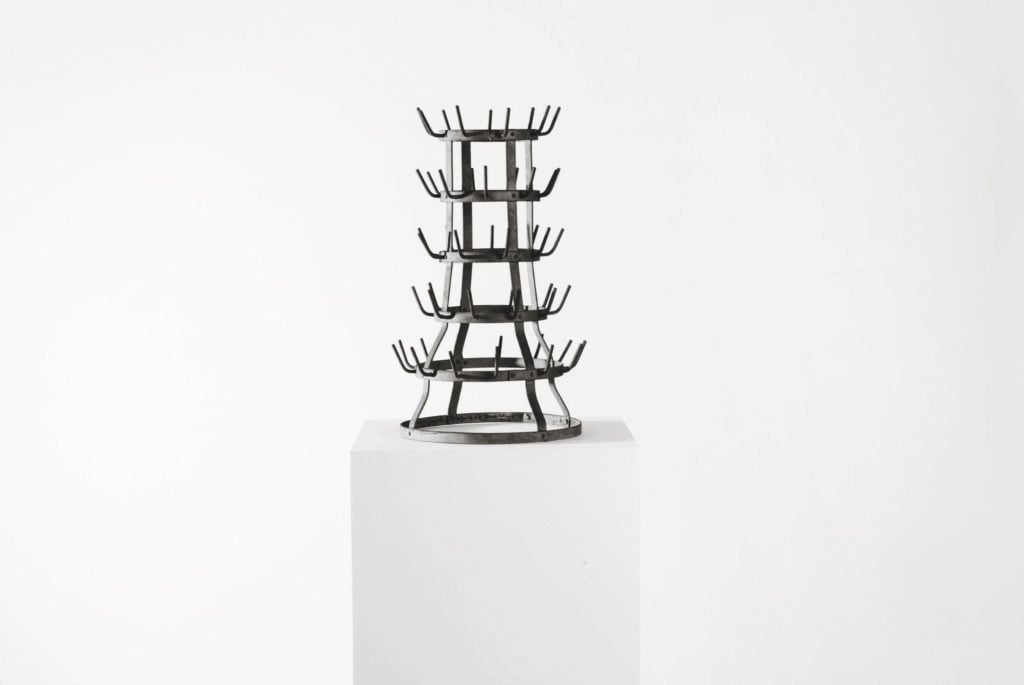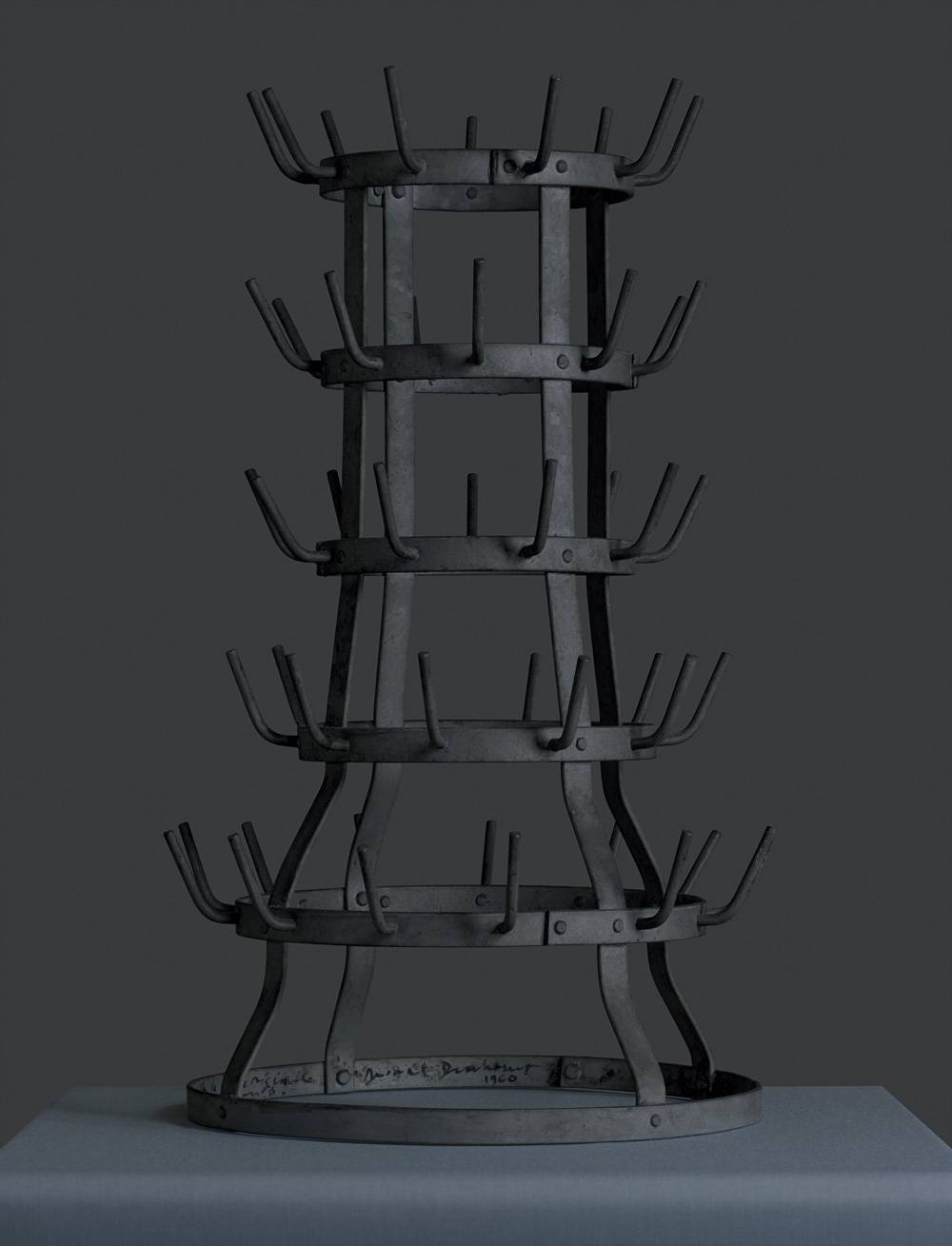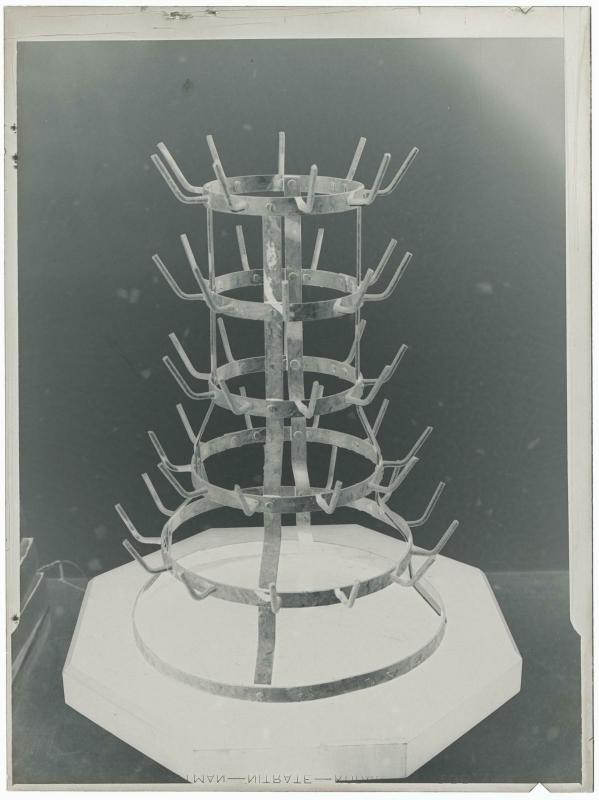
Artistes & Designers MARCEL DUCHAMP
1 Marcel Duchamp achète son premier porte-bouteilles en 1914 au Bazar de l'Hôtel de ville. Mais c'est de New York, en janvier 1916, à distance donc, au moyen d'une lettre, qu'il tente de l'activer commereadymade. Il demande à sa sœur, Suzanne, elle à Paris, d'inscrire une phrase puis de signer pour lui cette chose d.

Marcel Duchamp Bottle Rack (PorteBouteilles) (1914) r/museum
Marcel Duchamp's famous Bottle Rack was to be a work without art, something made without 'artistic handiwork.' Taking a fresh look, Lars Blunck shows in this publication, designed by Stefan Banz, how strongly Duchamp, using irony and playing with words, turned against the painterly handiwork of his time—and remained committed to it by opposing painting with a 'non-artistic handiwork.

20 Shows to See in Paris during FIAC News
On est en janvier 1916. Depuis New York où il s'est exilé, Marcel Duchamp crée, à distance, le premier ready-made et entre dans l'histoire.Par une lettre célèbre, il enjoint à sa sœur d'"activer" un porte-bouteilles demeuré dans son atelier parisien depuis son achat, en 1914, au Grand Bazar de l'Hôtel de Ville.Pour cela, Suzanne Duchamp devra simplement apposer sur l.

Man Ray, Porte bouteilles de Marcel Duchamp Arthipo
En 1914, Marcel Duchamp acquiert, au rayon quincaillerie du Bazar de l'Hôtel-de-Ville, un porte-bouteilles. Plus tard, il justifie cet achat : « Ce choix était fondé sur une réaction d'indifférence visuelle, assortie au même moment à une absence totale de bon ou mauvais goût… en fait une anesthésie complète » (M. Duchamp, « À propos des readymades », dans Duchamp du signe.

Marcel Duchamp l'art contemporain et la révolution de l'urinoir
Marcel Duchamp : Porte-bouteilles (1914-1964) 11-12-2011. Type. Recording Audio, 1h 21min 37s. Direction. Régie des salles. Production. Centre Pompidou, Paris. As part of the serie.

jlggbblog4 · Marcel Duchamp
The exhibition features Marcel Duchamp's Porte-bouteilles from 1959, the year Robert Rauschenberg bought it for his personal collection - where it remained until it was passed on to the Robert Rauschenberg Foundation.

La folle histoire du Portebouteilles de Marcel Duchamp
35 x 23.8 cm. Marcel Duchamp. From or by Marcel Duchamp or Rose Sélavy (The Box in a Valise) Schwarz 484 (Series F), 1966. Original box, covered with red leather, with a total of 3 miniature objects and 77 reproductions after original works by the artist. 41.2 x 38.3 x 9.5 cm.

Porte bouteilles de Marcel Duchamp Centre Pompidou
The exhibition features Marcel Duchamp's Porte-bouteilles from 1959, the year Robert Rauschenberg bought it for his personal collection - where it remained until it was passed on to the Robert Rauschenberg Foundation.

Porte bouteilles de Marcel Duchamp Centre Pompidou
When Duchamp moved to New York in 1915, he left the readymade known as Bottle Rack and other works in his Paris studio, which he entrusted to his sister, the artist Suzanne Duchamp. Writing to Suzanne in 1916, Duchamp asked her to sign Bottle Rack for him with a now-unknown inscription and to send it to New York. By the time Suzanne received her brother's letter, she had already discarded.

Le Portebouteilles de Marcel Duchamp à l’Art Institute Le Quotidien de l'Art
Man Ray (Emmanuel Radnitzky, dit) (1890, États-Unis - 1976, France) Porte bouteilles de Marcel Duchamp. vers 1920

Marcel Duchamp Portebouteilles Thaddaeus Ropac
Débat / Rencontre. Marcel Duchamp. Porte-Bouteilles, 1914-1964. 11 déc. 2011. À partir de 11h30. Dans le cadre de. Un dimanche, une oeuvre 2010-2011.

PORTEBOUTEILLES by Marcel Duchamp twelvebooks
7 rue Debelleyme, 75003. Tue-Sat 10am-7pm. Visit. Contact Gallery. Save Exhibition. Artist: Marcel Duchamp. Galerie Thaddaeus Ropac presents an exhibition featuring the most important sculpture by Marcel Duchamp to be on the market for many years. The Porte-bouteilles (Bottle Rack), dated 1959, is considered one of the most influential.

Marcel Duchamp BottleRack (The original, lost, was carried out in Paris in 1914. The replica
Porte-bouteilles [1], ou parfois Séchoir à bouteilles ou Hérisson, est une œuvre d'art de Marcel Duchamp réalisée à Paris en 1914.. Description. Cette œuvre n'est plus considérée comme le premier Ready-made, œuvre « déjà faite » puisqu'elle a été fabriquée par l'artiste.L'œuvre originale a disparu, mais l'artiste réalisa des répliques dans les années 1960, aujourd'hui.

Marcel Duchamp, PorteBouteilles (Bottle Rack), 1941/1959 Thaddaeus Ropac
Marcel Duchamp achète son premier porte-bouteilles en 1914 au Bazar de l'Hôtel de ville. Mais c'est de New York, en janvier 1916, à distance donc, au moyen d'une lettre, qu'il tente de l'activer comme readymade. Il demande à sa sœur, Suzanne, elle à Paris, d'inscrire une phrase puis de signer pour lui cette chose d'industrie non modifiée, choisie pour l'indifférence qu.

Portebouteilles Marcel L'atelier Belle Lurette, rénovation de meubles vintage
Ron Arad : « Je voue un culte au Porte-bouteilles de Marcel Duchamp ». Designer et architecte, Ron Arad (né en 1951) est l'auteur de la fameuse étagère modulable « Bookworm » et du musée du design de Holon en Israël. Fasciné par les ready-made de Marcel Duchamp, il nous a confié comment le fameux Porte-bouteilles de l'artiste l.

Porte Bouteille Marcel Duchamp Histoire Des Arts Aperçu Historique
Bottle Rack (Porte-Bouteilles) 1914/1959. Marcel Duchamp began his career as a painter of conventional portraits and nudes. By 1912, however, he set out to prove the end of "retinal art"—pictures created to delight the eye—in order to "put painting once again at the service of the mind.". His answer was the "readymade," an.
- St Trojan Les Bains 17370
- Institut D études Politiques De Paris Anciens élèves Célèbres
- énigme Einstein 5 Maisons Solution
- Luna La Belle De Jerusalem
- Aix Les Bains Lac Plage
- Rua 69 Viana Do Castelo
- Prix Hyundai I10 Boite Automatique
- Pomme De Terre Agata Au Four
- Monument Connue A New York
- Senegal Date Palm Phoenix Reclinata
